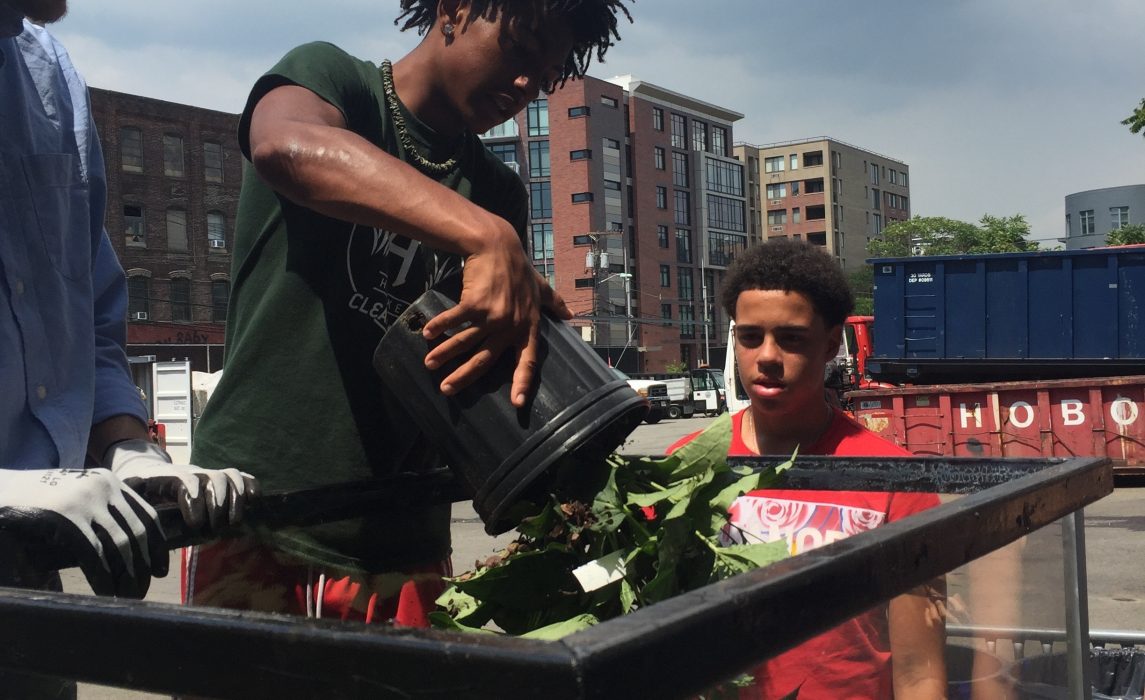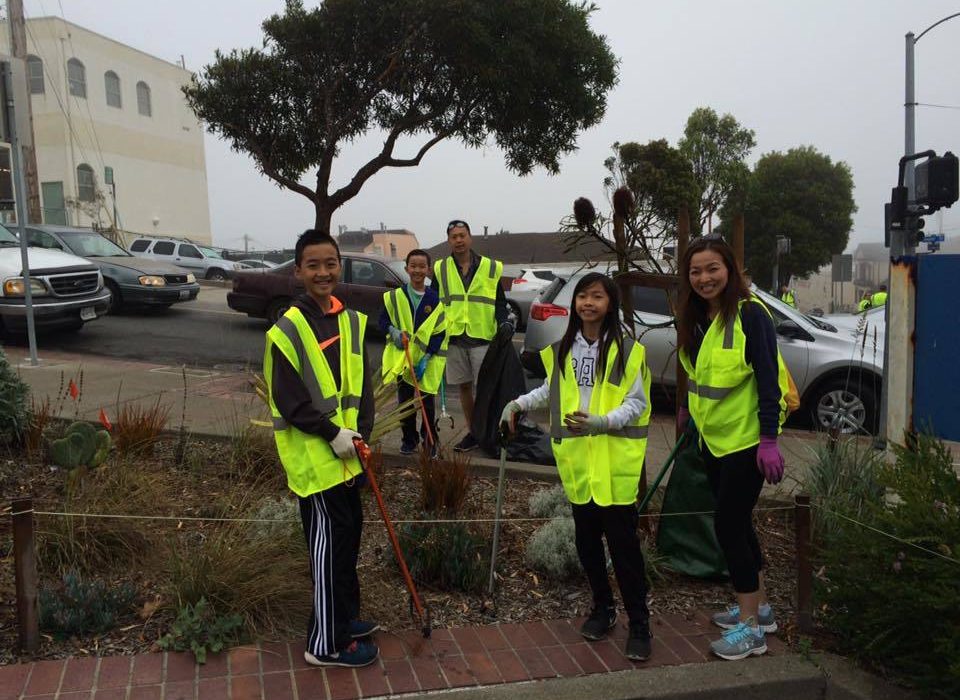Reflections on Prepared Together
To ensure that vulnerable communities are prepared for extreme weather and other emergencies, city leaders must work closely with citizens. That’s why, in 2017, with support from Walmart Foundation, we launched our Prepared Together program in seven cities in California and New Jersey.
Cities of Service provided a $25,000 grant and technical support, and placed two AmeriCorps VISTA members in each city hall. With this additional capacity, the cities developed initiatives to prepare the city and residents for disasters, focusing mainly on flooding and intense heat. Cities developed a number of strategies to tackle these problems with the help of citizen volunteers, including planting trees, painting roofs white to save energy, creating drain adoption programs, providing green jobs training, hosting cleanup events, installing rain barrels, and offering emergency response and preparedness training.
Over the course of the program, we learned more about how effective collaboration between city hall and citizens on the ground can help communities weather any challenge.
Building on Existing Engagement Infrastructure
A member of the Cities of Service coalition since 2009, San Jose has strong mayoral support for preparedness efforts and an established culture of volunteer engagement in city hall. Cities of Service has granted the city $125,000 for a number of projects, including Prepared Together, helping them address public problems, grow their volunteer network, and integrate their efforts. This robust citizen engagement infrastructure gave the Prepared Together program a strong foundation to stand on from the start.
The Prepared Together program is evidence that a city that establishes the infrastructure for engagement and strong relationships with citizens can accomplish a tremendous amount over time.
The result was a city that consistently got volunteers to come out in large numbers for their Prepared Together efforts. Around 1,400 volunteers planted 62 trees, organized 7 dumpster days, and cleared about 14 miles of waterway of trash and debris—all efforts that will help mitigate the severity of future flooding in San José. The Prepared Together program is evidence that a city with established infrastructure for engagement and strong relationships with citizens can accomplish a tremendous amount over time.
Committed City Staff Can Change How a City Operates
In Newark, New Jersey, and San Leandro, California, Cities of Service worked with committed city staff to demonstrate the importance of engaging citizens to other departments in city hall.
Led by Chief Sustainability Officer Nathaly Agosto-Filión, Newark’s Prepared Together program gave the city new ways to engage its citizens on important problems and target issues around flooding and extreme weather. Due to the hard work of Agosto-Filión and Cities of Service AmeriCorps VISTA members, citizen volunteers in Newark planted 30 trees, registered for and received 75 rain barrels, and adopted 96 catch basins committing to provide ongoing maintenance to prevent flooding.
In San Leandro, Cities of Service helped the city dramatically increase their preparedness efforts thanks to a committed and enthusiastic staff. The city took their Adopt A Drain program — originally funded by Cities of Service through the Bay Area Impact Volunteering program — to the next level by positioning it as an entry point for ongoing engagement opportunities for citizen volunteers. Beyond supporting the adoption of 194 drains, the city has shifted its thinking around volunteerism to be much more intentional with encouragement and advice from Cities of Service, by connecting CERT volunteers with other trainings, for example, and creating a school coloring contest to raise awareness among students and their families about the adopt-a-drain program and the importance of storm drains and keeping them cleared. The result has been the highest level of volunteerism the city has seen in years, with citizens proactively reaching out to the city requesting emergency and preparedness training.
Using Emergency Preparedness Projects to Build Relationships
In Jersey City, city-led emergency preparedness projects have been extremely effective in attracting local community groups to engage with the city for the first time.
The Cities of Service AmeriCorps VISTA members were key in helping to foster relationships between the city and public housing residents, where city staff had few connections. The VISTA members organized the first preparedness presentation at an affordable housing complex, where they introduced themselves, their connection to Jersey City, and talked to residents about what to do in the case of different emergencies. This piqued the interest of residents. Attendance grew at subsequent presentations, and residents came prepared to share concerns.
The VISTAs tailored their efforts for future presentations and responded to the specific community needs expressed by the residents. These included installing seven trees and three rain gardens with the help of 60 volunteers in one community and creating a Neighborhood Disaster Action Plan to respond to flooding emergencies in another neighborhood. Their responsiveness demonstrated to citizens that the city was serious about working together to address their concerns and improve their neighborhoods. For example, following a tree planting event at Marion Gardens Affordable Housing Complex, Afaf Muhammed, a long-time resident, lead an effort planting garden boxes funded by a mini-grant. Citizens in neighboring areas heard about the project and are now pushing to do something similar in their communities with Afaf leading the charge. She is also working to organize a mural painting event that will memorialize influential community leaders. She has become a champion for the community and now has multiple connections within city hall and in her neighborhood.
Cities of any size can apply these lessons beyond preparedness efforts. In addition to funds and AmeriCorps VISTA members from Cities of Service, the advice, experience, and connections we bring to these cities helped the staff make great strides strengthening relationships between residents and city government and better preparing communities for extreme weather.
Relationship Building is Key to Success
Stephen Stolte, the sustainability coordinator and program leader in Daly City, had few connections to the communities he was hoping to work with – largely immigrant communities with high unemployment and low education levels that lacked a relationship with city hall. Like most of Daly City, these neighborhoods have insufficient tree canopy, which can lead to increased heat and flooding. With the Cities of Service AmeriCorps VISTA members leading the charge, the city targeted their outreach efforts to engage local community groups.
With little community space in the largely bedroom community, it was not an easy task. But the additional capacity from the AmeriCorps VISTA members and troubleshooting assistance from Cities of Service staff helped the city staff make progress. The city forged relationships with local schools, a community center, neighborhood associations, a church, and local businesses. Developing relationships with trusted groups was a pivotal way for the city to start building a positive rapport with its residents.
By the conclusion of the program, Daly City had planted 127 trees, with two of their largest projects happening in partnership with JFK Elementary School and the Boys and Girls Club at the Bayshore Community Center. Many of these groups have since expressed interest in engaging with the city to plant trees and increase green space on an ongoing basis.
“It’s about relationships,” Stephen told us. “It’s about face-to-face interactions. There’s no doubt that it’s time consuming but it’s a long-term gain.”



